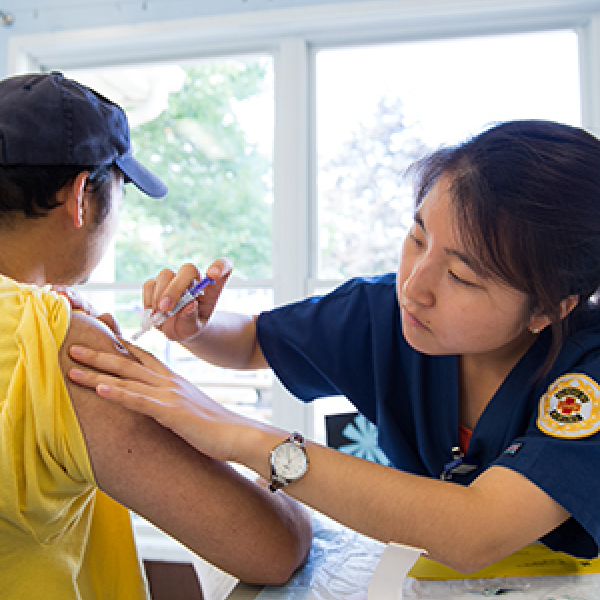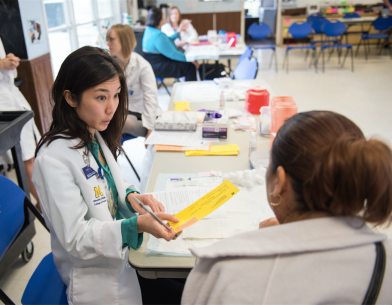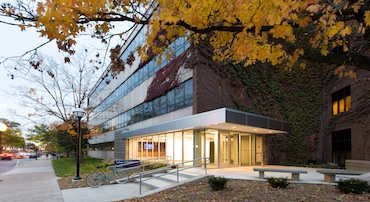Health Students Collaborate to Provide Community Flu Shots

This past fall marked the 3rd annual Michigan Community & Interprofessional Practice Training (M-CIPT) community flu clinic series. M-CIPT is a collaborative effort between the School of Nursing, College of Pharmacy, and School of Public Health in partnership with the University of Michigan Health System (UMHS) Community Programs and Services. The project engages students from the three health disciplines in interprofessional interactions to promote the flu shot, provide immunizations, and educate patients in low-income and isolated communities.
According to the Centers for Disease Control and Prevention (CDC), flu viruses constantly change, allowing new strains to appear every year. Therefore, the CDC recommends a yearly flu vaccine for everyone 6 months of age and older as the first and most important step in protecting against this serious disease. The CDC also recommends that because children younger than 6 months cannot be vaccinated, their caregivers and entire family should receive the shot to prevent passing on the flu virus.
This year’s flu clinic series kicked off on September 25th. Over 70 students from across the three schools worked together to deliver more than 295 free flu vaccines during 9 flu clinics held in churches, clinics, and community centers. The vaccines were provided to high risk community members, including the uninsured, underinsured, those age 65 and older, individuals with certain medical conditions, and anyone living with or caring for other high risk individuals.
Director of UMHS Community Programs and Services, Alfreda Rooks, highlights the importance of the flu clinic for the students that participated and the invaluable, educational experiences the series provided.
 “We created the M-CIPT Flu Shot Collaboration to complement the courses students take within their respective disciplines. It is important for students to have “real-world” examples of what they are learning in the classroom and unscripted practice opportunities being in the community provides.”
“We created the M-CIPT Flu Shot Collaboration to complement the courses students take within their respective disciplines. It is important for students to have “real-world” examples of what they are learning in the classroom and unscripted practice opportunities being in the community provides.”
Before entering the community, the students across the three schools attended a workshop focused on being involved with diverse communities and overcoming the major barriers to influenza vaccination present among minority groups.
“I’ve never really thought about community health in the past. Through the flu clinics, I’ve realized the importance of primary prevention,” said John Yoon, Nursing’16. “There are so many different communities out there with different values and beliefs. This experience has shown me that I have to be aware of my own values and collaborate with patients and work around them as well.”
While the flu clinic series allowed students to interact with clients in the community, it also facilitated interprofessional collaboration across the three schools. Students have indicated that opportunities to work in interdisciplinary teams are lacking in their current curricula.
“The interprofessional aspect of MCIPT is a benefit to students,” said Rooks. “During the training session, students engage in scenarios that encourage discussion across disciplines to seek approaches and resolutions and a different exercise encourages sharing professional values inherent in their curriculum.”
Through interprofessional action-based learning, students worked alongside their peers from other health disciplines to provide quality patient education and care during the flu clinics. However, perhaps the most valuable experience the students gained from the series was the gratitude that the patients conveyed for the services provided, making the whole experience worthwhile.
“The positive impact for the community is immeasurable. For those who are most vulnerable to complications arising from the flu to receive immunization without worrying about transportation or costs and to be treated with dignity and respect is something that cannot be captured in dollars and cents,” ends Rooks.
For more information, visit the Michigan Center for Interprofessional Education.



